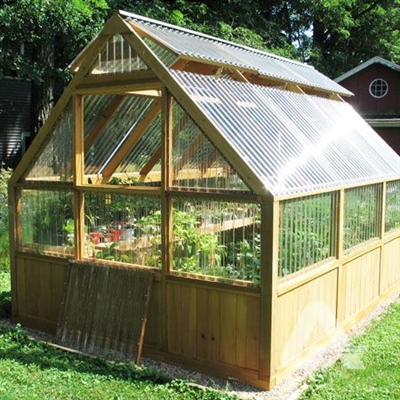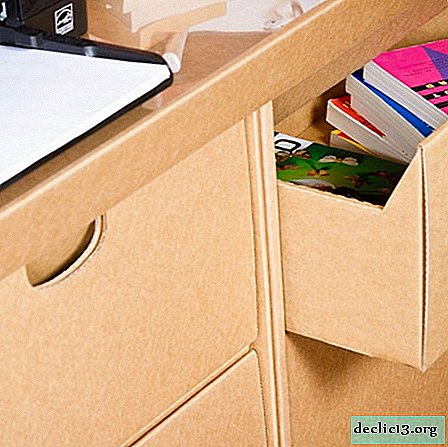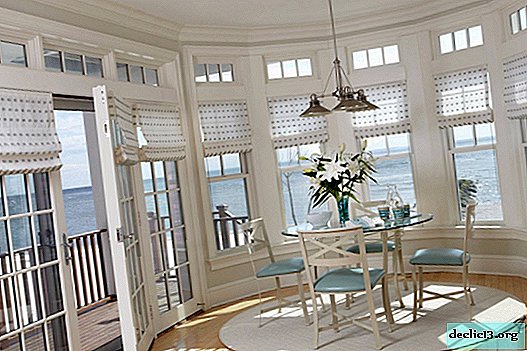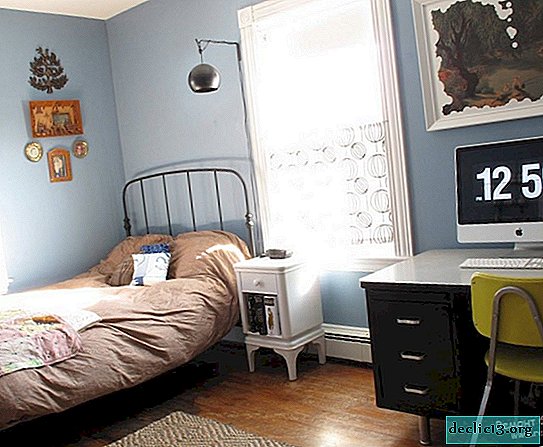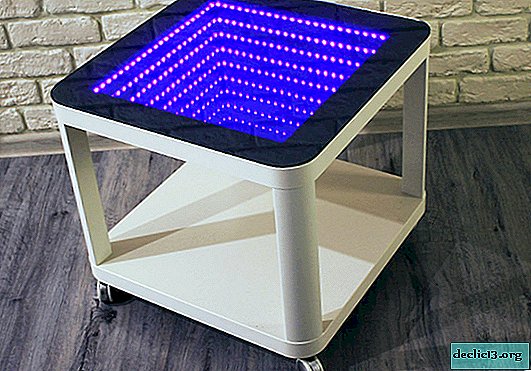Design features of beds for the disabled, model options
In the world there is a huge number of diseases that can bed a person for many years. To simplify the life of the patient with disabilities and allow him to independently perform some actions, a bed for the disabled was created. It is significantly different from a simple bed. This design has the potential for patient care and convenience in carrying out various medical procedures. Some beds are equipped with the mechanisms necessary for quick transportation of the patient.
Features
A sick person needs attention and care, especially during the rehabilitation period after complex operations. In such a period, the patient needs complete rest. Medical beds are endowed with functions aimed at creating comfortable conditions for the patient during illness or in the process of recovery. The design of the bed for the disabled provides options for its transformation, helping to maintain some independence.
The choice of bed is primarily influenced by the patient’s health status, movement, degree of damage to the body. The body of the bed can rise and fall, giving the patient the opportunity to carry out the procedure or feed him. The frame of the product consists of metal rails coated with a paint and varnish material that is easily wiped and treated with disinfectant solutions. The mattress itself should be with a removable cover that easily passes air. Distinctive features of beds for bedridden patients from ordinary ones are:
- A protective fence installed along the edge of the product;
- Equipping the design with shelves for ease of storage and use of medications;
- Supply of the frame with racks for fixing medical tools and devices.
For the convenience of hygiene, most models are equipped with a mini-toilet, in particular, these are beds for disabled people of the 1st group.




Types and functional features
A medical bed has the functionality with which the patient can independently and with the support of the medical staff change the position of the body - to rise, holding onto the improvised means installed on the bed, to sit. Possible movements on the bed depend on the number of sections in the structure:
- Two-section beds allow the patient to change the position of the head and legs;
- Three-section - support the head, legs and arms at the same time;
- Four-section - work on the position of the whole body.
According to the method of control, a bed for the disabled can be:
- Mechanical - the bed is transformed with the help of hand power and special levers;
- With an electric drive on the remote control, with which it is much more convenient for the patient to change position than manually trying to lift a section with levers.
This or that design, in order to avoid falls, is equipped with protections in the form of lattices which can be freely removed and put. Each type of bed for the disabled is designed for a specific load exerted by the weight of a person. There are products that can withstand weight up to 200 kilograms. All bed designs require the installation of special wheels, if necessary, fixed and providing quick transportation of the patient.
The main types of multi-functional beds for patients with reduced mobility:
- With pneumatic spring - in the design of the bed there is a pneumatic spring that supports sections for the legs and head;
- With a mechanical drive - the position of the bed is changed manually through mechanisms in the form of levers, gears and chain transmission;
- With electric drive - the electric motor itself raises or lowers the necessary part of the berth, just press the button on the control panel;
- With a toilet - the bed is equipped with a toilet, the patient can go into it without getting up;
- Orthopedic - the equipment of a bed with an orthopedic mattress excludes the formation of pressure sores in people who are not at all able to move independently. Mattresses have a special outer cover, which is easy to remove and clean;
- Beds with a bed for turning the patient over - the design is equipped with a mechanism that allows you to bend the bed in two planes in case you need to turn the patient;
- With the regulation of the bed in height - useful when shifting the patient, and also facilitates examination.
The more sections the bed design provides, the easier it is to position the patient in a comfortable position for reading or watching TV. This is especially true for people with disabilities. Constant displacement of sections allows to avoid leakage of limbs and the formation of pressure sores. Improves blood flow and overall well-being of the patient. Most products are equipped with lifting arches, supports and head restraints to support body parts.
If it is difficult to choose the type of multi-functional bed with several sections, it is better to seek the advice of your doctor. Proper adjustment will speed up the healing process.
 Two-section
Two-section Three section
Three section Four section
Four sectionMaterials
Well-known global manufacturers of medical equipment and devices present a huge selection of their products on the sales market. The struggle for superiority among competitors is very high. One of the major segments of the medical device market is the range of functional beds for people with disabilities. And in this category there can be no products with any shortcomings.
Medical beds for bedridden patients are made of high-strength metal structures and are treated with a special powder coating. The product has a long operational period, regardless of design features and is customized for any patient. The hospital-wide bed model has a reinforced frame that can withstand heavy loads. Depending on the purpose, special crossbars are added to the frame design. The polymer coating of metal components has high performance and does not deteriorate under the influence of detergents.
The design of the bed may include wooden headboards. And the frame itself can be made of durable wood, it feels nicer to the touch and resembles home furniture. In addition, wooden frames do not have sharp angles, which reduces the risk of injury to the product. The only drawback, compared with metal, is a shorter life. If the medical bed is equipped with wheels for transportation, it is better to choose wheels made of gray rubber: there will be no marks on the floor.





Special mattresses
With prolonged lying down, the patient is likely to manifest necrosis or pressure sores in the soft tissues. To protect the patient and prevent the body from stagnating, effective orthopedic mattresses are used. Currently, several types of such mattresses are available. They may be different in design, but their main function is to reduce pressure on the human body.
Orthopedic mattresses do not have a pronounced fulcrum; they adjust to the relief of the patient’s body, evenly distributing the load over the entire area of the mattress.
There are several types of mattresses:
- Spring-loaded version - springs supporting the person are installed inside the product on stretch marks. Their main disadvantage is the formation of rust, the appearance of squeaks and the collection of dust. But there is one plus - they are the cheapest of all types of mattresses;
- The second, most effective representative is a mattress with a special filler, which has good fluidity and improved elasticity. Such products are more accurate in patient support;
- The third option is a pulsating mattress using a compressor. The principle of operation is based on changing the support point of a bed patient by sequentially filling with air, isolated from each other, compartments inside the mattress. Air is pumped into compartments and staggered in 10 - 15 minutes, providing also a massage of the body.
When choosing the type of orthopedic mattress, the severity of the disease, the treatment time, the nature of paralysis (full or partial) are taken into account, and are also guided by the following factors:
- The material from which the mattress is made must be moisture resistant, quick to clean;
- A mattress with a compressor should have a low noise level, since the comfortable state of a bed patient depends on it. Excessive noise can irritate the patient and affect his well-being;
- Not a mandatory factor, but it is sometimes present - the presence of airflow to reduce sweating.
Necrosis has a negative effect on the patient's condition and causes him enough anxiety. It is better to prevent them than to treat them later. An orthopedic mattress is a prerequisite for recovery in a set of measures for the treatment of a bed patient.
 Spring loaded
Spring loaded Special filler
Special filler Throbbing
ThrobbingOptional equipment
Using a bed for a lying patient, not only the degree of morbidity is taken into account, but also the way to further care for the patient in order to achieve a healing effect. Sometimes, to achieve a positive result, additional elements and devices are used:
- Tripod - is installed on the bed frame and is used to fix the dropper during the rehabilitation period;
- Automatic lifts - an effective addition to the bed, used to raise or change the angle of the patient, for example, bring him into a sitting position for feeding or watching TV. It is completed with a control panel for independent use;
- Rope ladder - used for patients with disabilities of the musculoskeletal system. Helps independently to rise and sit down to the patient in bed;
- Support under the back is an effective means for transferring from a prone position to a half-sitting or sitting position. The device is convenient for feeding, reading and conducting medical procedures;
- Protections on a design - is established on an edge of a bed and fastens on a frame. Prevents the patient from rolling off the mattress;
- Racks or handrails for the bed - help get out of bed, sit down or lie down. The handrail is usually covered with material that excludes the sliding of the hand on its surface;
- A feeding table is an addition that provides a patient with a comfortable state when eating, being in an upright position;
- Among other things, the bed can be equipped with such additional devices as head restraints for washing the hair, bathtub for bathing, a bedside arc, and a brake system.





Photo
































